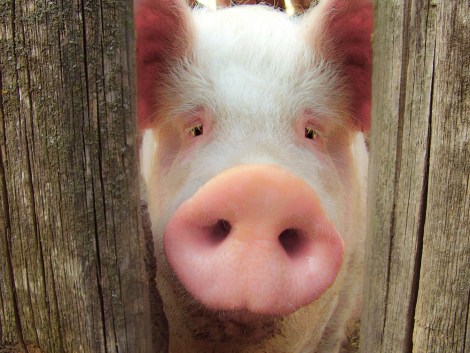Here's a sampling of articles from 2010-2013:
Is Coconut Water Too Good to Be True?
‘Parks and Recreation’ is joking about it, Rihanna is selling it, and
you’re probably buying it—but is this beverage boom good for farmers? Read more on TakePart.
Surprise: Antibiotics Are Allowed in Organic Apple and Pear Farming
Jack Jones (who asked that his real name not be used) takes care of a
small organic pear orchard for a farmer south of the San Francisco Bay
Area. This spring, as the trees have begun to blossom, he’s been
spraying them with a small amount of the antibiotic tetracycline to
prevent a disease called fire blight. Read more on TakePart.
Kathleen Franklin
Throwing Together a Meal, One Swap at a Time
A number of food swaps are popping up around the Bay Area. Taking cues from
the food co-operatives of the 1970s, these urban dwellers are
restructuring their food economies around face-to-face relationships. Read more at the New York Times.
How Hot is That Pepper? Unpacking the Scoville Scale
In
2007, the Naga Bhut Joloki or “Ghost chile” was named the hottest
pepper on earth. Then in 2010 the Naga Viper stole the title. And in
2012 the Trinidad Scorpion Moruga Blend moved into the lead. And for
good reason. The Scorpion ranks at round 2 million heat units on the Scoville scale. (For comparison, tabasco sauce has 2,500–5,000 Scoville heat units or SHU.) What exactly does that mean? Read more on Smithsonian.com.
Dinner Discussion 33
Some people collect items; Leif Hedendal collects dinner companions. Every
month for the last three years he has made his dream dinner party list.
He thinks big, including a range of activists, artists, writers,
filmmakers, farmers and musicians he’s met, read about or encountered in
some way. Then—and here’s what sets him apart from the rest of us—Leif
simply invites them to join him for what he calls a Dinner Discussion ... To see the lists
alone you might think this is some kind of networking event, but the
meals couldn’t feel further from that. Guests simply eat, chat (or
observe) and go home feeling a little more connected and a little more
cared for. Read more on the Kinfolk website (subscription required).
Smooth as Silk: How big brands milk small farmers for all they’re worth
Silk soy milk makes an interesting case study of consolidation in
the organics industry. You see, for years all the soy milk it sold was
certified organic. And by the mid-2000s, the brand had become such a
powerful market force that it was keeping a significant portion of
organic soy farmers in business. Read more on Grist.
Feed your soil — and the rest will follow
Soil health doesn't matter. That is, unless you want to protect crops against drought, keep excess nutrients out of lakes and oceans (think: dead zones), and absorb carbon greenhouse gases from the atmosphere. Read more on Grist.
Confined dining: A primer on factory farms and what they mean for your meat
In regulatory lingo, these meat factories are called “concentrated
animal feeding operations,” or CAFOs. (Pronounced “cay-fo.”) Here’s
everything you ever wanted to know about them — and a few things you’d
probably rather not know. Read more on Grist.
Don’t box me in: The unstoppable growth of CSA-style produce delivery
Is the growth of the CSA model watering down the concept? Or simply connecting more eaters to sustainable food. Read more on Grist.
Beyond red lists: The power of community-supported fisheries
The Community-Supported Fisheries (CSF) movement -- provides a regular delivery of local seafood, or what are essentially CSAs for fish. And — just like farm-based effort that took hold
in the ’90s — CSFs might just be a game changer for both eaters and the
environment. Read more on Grist.
The food movement’s final frontier: Taking care of workers
Rita (not her real name) cuts pork on a line she says has sped up
considerably in recent years. The factory has reduced its staff, but
demands the same amount of work from the employees that remain. She has
to move fast, with a sharp knife, on her feet, for eight to 10 hours a
day. “I’ve never seen so many people with heart problems,” she said of
her co-workers over the phone recently. “I think it’s because of the
stress. Where there used to be four of us, now there are two people.
[The managers] say, ‘You all can do this.’” Read more on Grist .
Meatifest destiny: How Big Meat is taking over the Midwest
When the Des Moines Register ran a front-page story
last week calling into question the growth of concentrated animal
feeding operations (CAFOs) in the state, it wasn’t environmentalists or
animal rights activists who went on record against the facilities. No,
the article featured ex-hog farmers who have been vocal in opposing new
factory farms, as well as several Iowans who don’t want to see huge
facilities — nor the “poo lagoons” that go along with them — take over
the landscape. Read more on Grist.
Oakland Homesteading School Caught in Trademark Tussle
A Pasadena-based family holds rights to "urban homesteading," much to local homesteaders' surprise. Read more at the Bay Citizen.




